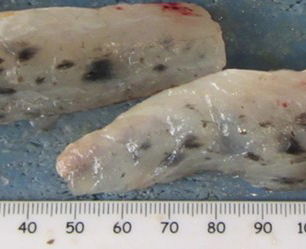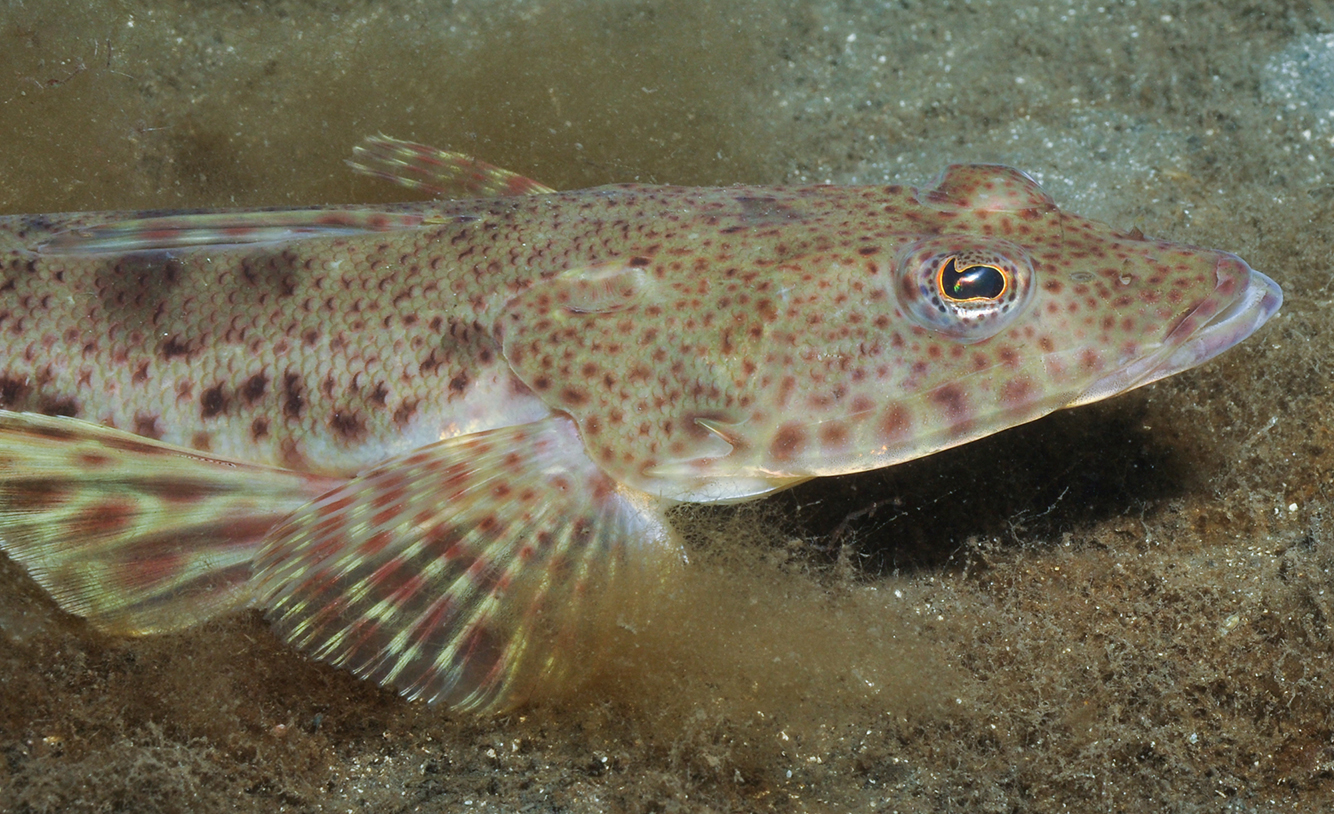
A survey of Tasmanian recreational fishers conducted by IMAS researchers has revealed that dark pigmentation found in usually-white Sand Flathead fillets has been known about for many years and, although typically rare, has been observed in catches taken from a range of locations around the state.
This dark pigmentation, called melanisation, occurs when the natural pigment melanin becomes concentrated in the muscles of fish. While one of the known causes of melanisation in northern hemisphere fish species is parasites, no evidence of this was found in studies on Sand Flathead conducted at the University of Tasmania.
 IMAS survey leader, Associate Professor Jeremy Lyle said flathead account for over half of all finfish caught by recreational fishers in Tasmania. (Photo, left: Sand Flathead, Credit: Rick Stuart-Smith, Reef Life Survey)
IMAS survey leader, Associate Professor Jeremy Lyle said flathead account for over half of all finfish caught by recreational fishers in Tasmania. (Photo, left: Sand Flathead, Credit: Rick Stuart-Smith, Reef Life Survey)
“Most of those are Sand Flathead, so it is crucial to understand the extent of melanisation and its causes and consequences,” he said.
The online questionnaire-based survey was designed to connect the current scientific understanding of muscle melanisation in Sand Flathead with the observations and experiences of recreational fishers.
“The survey identified the locations where melanisation was commonly observed, although the proportions of affected fish tended to be low,” Associate Professor Lyle said.
Key locations included the Tamar River in the north and multiple sites in the south-east, including the Derwent Estuary, D’Entrecasteaux Channel, Norfolk-Frederick Henry Bays and the Tasman Peninsula.
“While the south-east tended to show higher levels than the rest of the state, some sites with high incidences were adjacent to those with low levels, so there was a lot of variation.
“Four locations were suggested to show a relatively high proportion of affected Sand Flathead, they included Bell Bay in the Tamar, Carnarvon Bay in Port Arthur, Simpsons Bay in the D’Entrecasteaux Channel, and at Southport,” he said.
“At these locations, recreational fishers reported observing some Sand Flathead with extensive areas of muscle melanisation, and there was a perception that the incidence of melanisation may have increased in recent years.
"Areas where fishers reported little of no evidence of melanisation included the north coast, apart from the Tamar, and the more exposed areas off the east coast."
Associate Professor Lyle said the IMAS survey had helped set the direction for research into muscle melanisation in fish.
“Future research will explore the type of melanin present and seek to assess site-specific and environmental factors that may be implicated in the occurrence of melanisation.
“Sand Flathead are a core component of Tasmania’s recreational fishery, so the causes, extent and consequences of melanisation are vital questions to be addressed when considering the long-term sustainability of the fishery,” he said.
Find out more about the survey here or read the full report here.